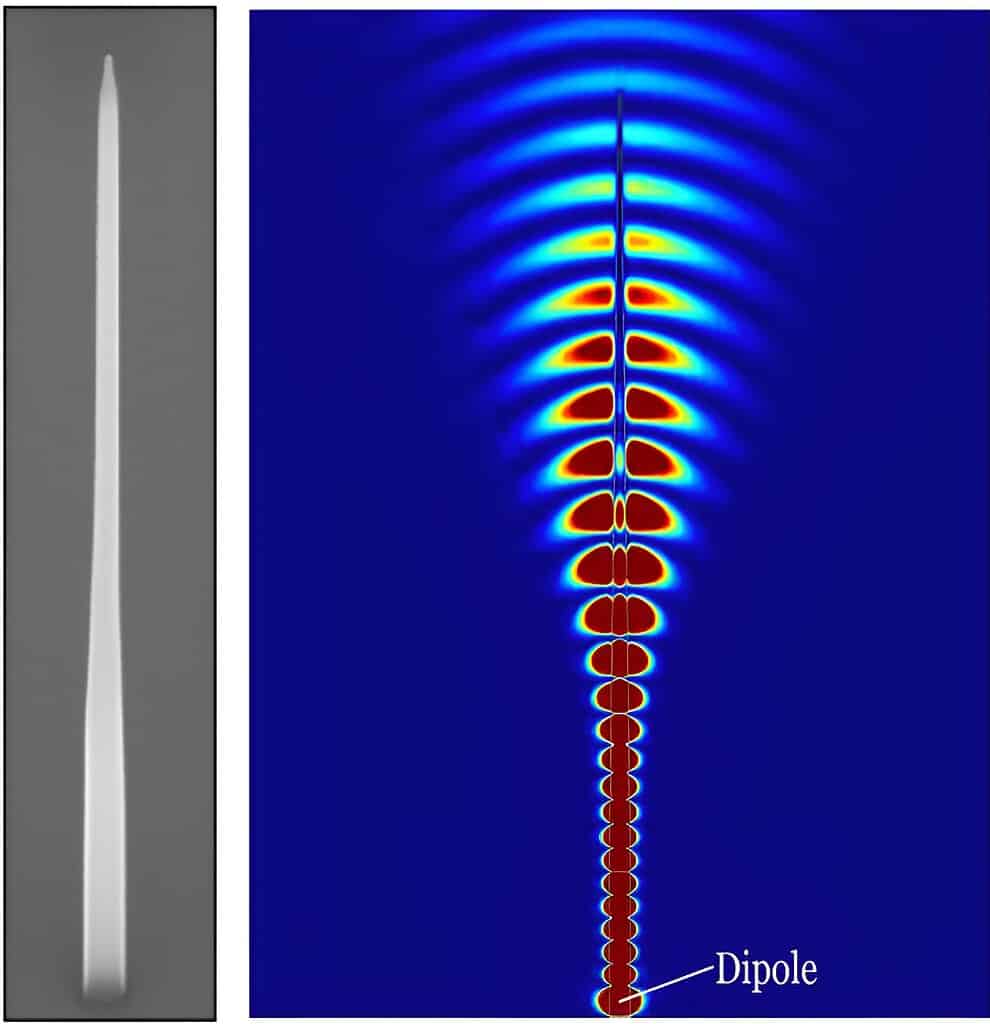By combining two Nobel Prize-worthy concepts in physics — entanglement and quantum dots — researchers at the University of Waterloo have made a breakthrough in quantum communication.
The physicists achieved highly efficient and near-perfect entangled photon production, which could form the backbone of the future of telecommunication; one that is much more secure than today.

Entanglement Meets Quantum Dots
At the heart of this research lies the entangled photon source—an indium-based quantum dot embedded within a semiconductor nanowire. Entangled photons are pairs of light particles that, once connected, maintain their link over vast distances — even separated by light-years. Despite their vast separation, a change induced in one will affect the other.
Like all things in the quantum realm, entanglement is counter-intuitive and plain weird.
Let’s take an example. Consider a photon hitting a splitter that sends it down one of two paths, A or B. Before measurement, the photon doesn’t just potentially travel down A or B; it exists in a superposition, simultaneously taking both paths. If these paths represent entangled particles, observing the photon on path A instantly determines that another photon—if entangled with the first—must be on path B, no matter how far apart they are.
This concept challenges our classical intuition. One might argue that the photon was always on path A, we just didn’t know until we looked. However, quantum mechanics shows that assuming the particle has a definite position before measurement leads to predictions that don’t match with reality. Entanglement suggests that these particles are linked in a way that defies our conventional understanding of space and causality.

This phenomenon, recognized by the 2022 Nobel Prize in Physics, forms the foundation for quantum communication. By integrating this with quantum dots—tiny semiconductors that can emit light at precise frequencies—the researchers at the University of Waterloo’s Institute for Quantum Computing (IQC) have managed to significantly optimize the process for creating entangled photons.
The breakthrough involves embedding these quantum dots into nanowires to produce entangled photons 65 times more efficiently than was previously possible. This new method not only allows for the on-command generation of entangled photon pairs but also increases the degree of their entanglement, thanks to high-resolution single photon detectors.
“The combination of a high degree of entanglement and high efficiency is needed for exciting applications such as quantum key distribution or quantum repeaters, which are envisioned to extend the distance of secure quantum communication to a global scale or link remote quantum computers,” said Dr. Michael Reimer, professor at IQC and Waterloo’s Department of Electrical and Computer Engineering.
“Previous experiments only measured either near-perfect entanglement or high efficiency, but we’re the first to achieve both requirements with a quantum dot.”
Beating quantum computers at their own game
Armed with this method, the physicists simulated a method of sending messages with unparalleled security, known as quantum key distribution (QKD). QKD uses the principles of quantum mechanics to create a secure communication line. Essentially, it allows two parties to produce a shared random secret key, which can then be used to encrypt and decrypt messages. The beauty of QKD is that if an eavesdropper tries to intercept the key, the very act of measuring the quantum particles alters their state, making the intrusion detectable.
According to a recent report, cybercrime costs the world a staggering $8 trillion in yearly damages. This figure would have been much worse were it not for the public key cryptography used to protect our sensitive data today. However, these protocols could be rendered useless by the forthcoming widescale availability of powerful quantum computers.
Rather than math, QKD uses the quantum properties of light to generate secure random keys for encrypting and decrypting data. This is why we can expect QKD to be secure even against attacks performed by quantum computers. This latest research stands at the forefront of the push toward a world where quantum communication can securely connect individuals and organizations across the globe.
The findings appeared in the journal Communications Physics.









